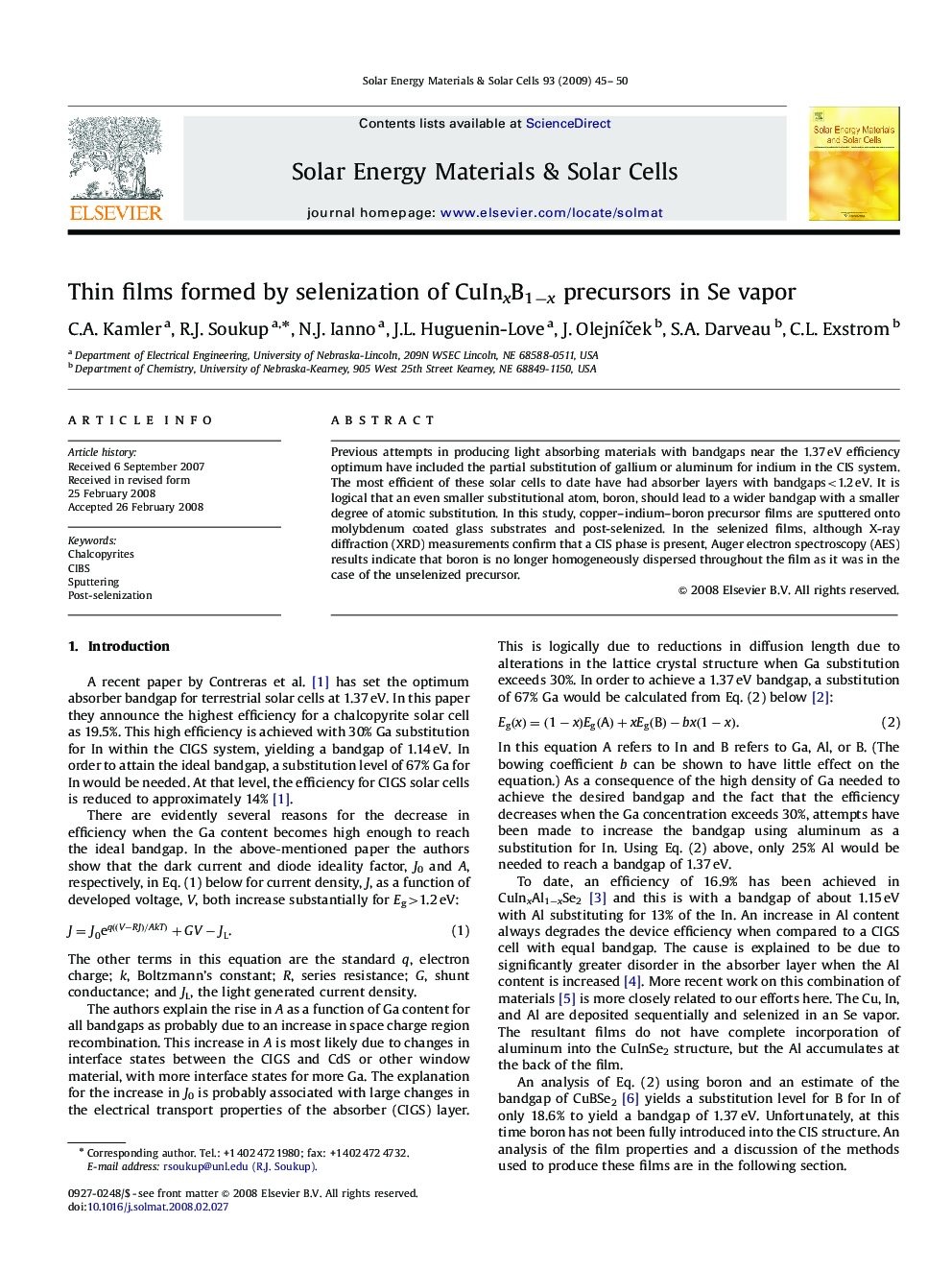| Article ID | Journal | Published Year | Pages | File Type |
|---|---|---|---|---|
| 80662 | Solar Energy Materials and Solar Cells | 2009 | 6 Pages |
Previous attempts in producing light absorbing materials with bandgaps near the 1.37 eV efficiency optimum have included the partial substitution of gallium or aluminum for indium in the CIS system. The most efficient of these solar cells to date have had absorber layers with bandgaps<1.2 eV. It is logical that an even smaller substitutional atom, boron, should lead to a wider bandgap with a smaller degree of atomic substitution. In this study, copper–indium–boron precursor films are sputtered onto molybdenum coated glass substrates and post-selenized. In the selenized films, although X-ray diffraction (XRD) measurements confirm that a CIS phase is present, Auger electron spectroscopy (AES) results indicate that boron is no longer homogeneously dispersed throughout the film as it was in the case of the unselenized precursor.
